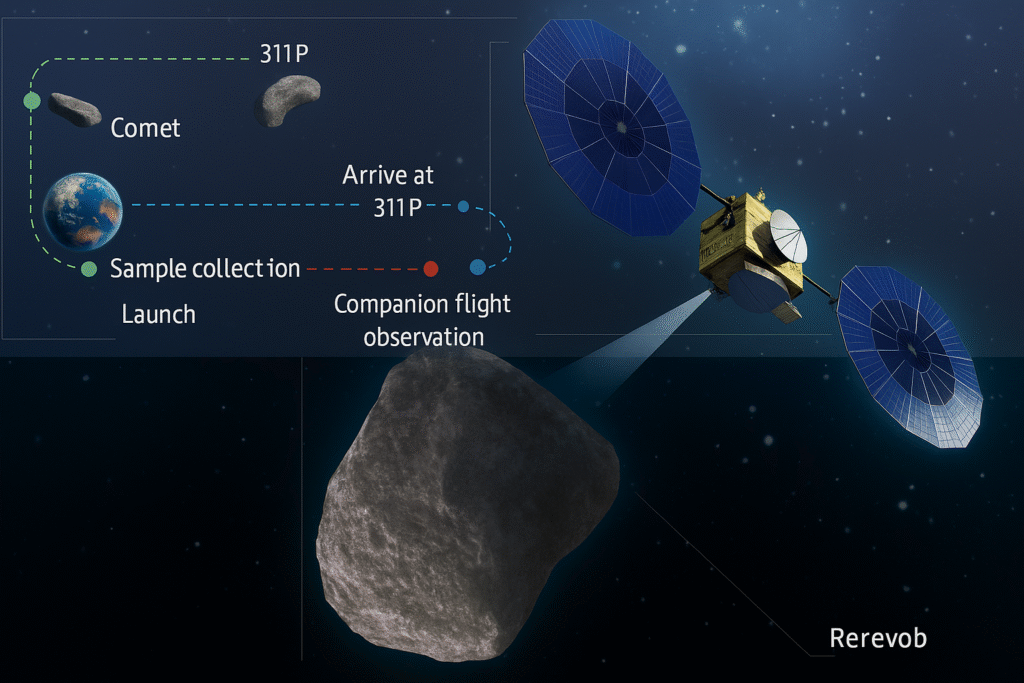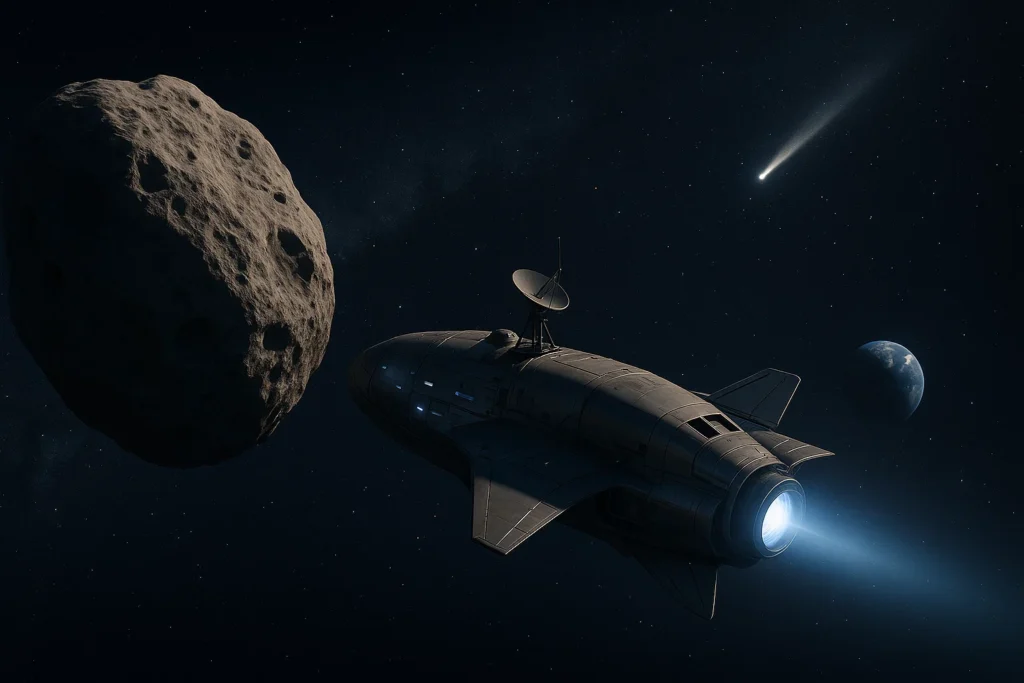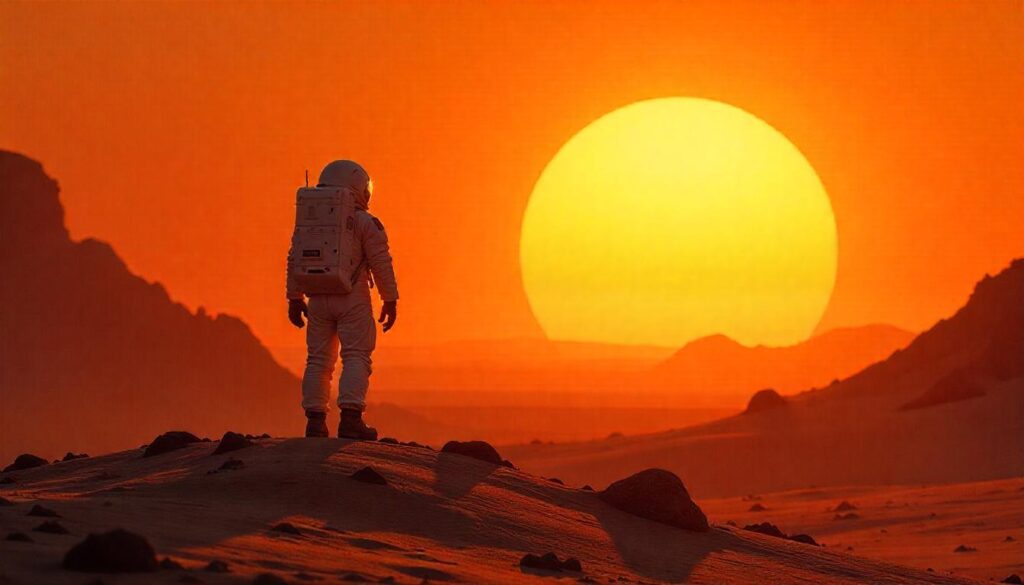Introduction: Tianwen-2 — China’s Bold Space Ambition

Ever heard about a spacecraft chasing an asteroid and a comet — in the same mission?
If you’re scratching your head wondering why this matters, you’re not alone.
You’ve probably seen headlines about China’s Tianwen-2 launch and thought,
“Alright, another space thing. But why should I care about this one?”
Here’s the thing: Tianwen-2 is a big deal. It’s not just another rocket launch — it’s the first mission in history to bring back samples from a near-Earth quasi-satellite, and then go on to explore a comet in the asteroid belt. That’s a scientific first, and it puts China in a league of its own.
This blog breaks it all down — without the jargon. You’ll walk away with:
A clear picture of what the mission is doing.
Why it’s so scientifically and politically significant.
How it compares to NASA, JAXA, and others in the space race.
What Is Tianwen-2?

Tianwen-2 is China’s second interplanetary mission under its “Tianwen” space programme. Launched on 28 May 2025, the spacecraft is targeting two cosmic bodies:
An asteroid named 469219 Kamoʻoalewa, a rare quasi-satellite.
A main-belt comet known as 311P/PANSTARRS, famous for shedding dust like a mini-firework in space.
The goal? Collect samples from the asteroid, return them to Earth, and then fly onwards to study the comet — something no mission has ever done before.
🛰️ This marks China’s first asteroid sample return mission and showcases its growing ambitions in deep space. Learn more from the CNSA (China National Space Administration).
Quick Mission Facts
| Feature | Details |
|---|---|
| 🚀 Launch Date | 28 May 2025 |
| 📍 Launch Site | Xichang Satellite Launch Centre |
| 🚀 Rocket Used | Long March 3B |
| 🌍 Target 1 | 469219 Kamoʻoalewa (asteroid) |
| ☄️ Target 2 | 311P/PANSTARRS (comet) |
| 🕒 Mission Length | Around 10 years |
| 🧪 Sample Return Date | Expected in 2027 |
Why Is Tianwen-2 Important?

1. Unlocking the Origins of Life
The asteroid and comet hold pristine material from the early solar system — possibly dating back 4.6 billion years. Studying them could help answer:
How planets like Earth formed.
Whether asteroids delivered water and organic building blocks for life.
2. First-Ever Quasi-Satellite Sample Return
Kamoʻoalewa is a quasi-satellite — it follows a weird, looping orbit near Earth. Tianwen-2 is the first spacecraft attempting to collect material from such a rare type of object.
This could give us insight into Earth’s own cosmic past.
3. Exploring a Comet After the Asteroid
After dropping the asteroid samples off on Earth, Tianwen-2 will fly out to 311P/PANSTARRS — a comet that behaves strangely, ejecting dust in pulses. This makes Tianwen-2 the first dual-body deep space mission ever attempted.
4. Boosting China’s Role in Space Science
Tianwen-2 builds on a strong track record:
Chang’e-5 returned lunar samples in 2020.
Chang’e-6 brought back far-side Moon material in 2024.
Tianwen-1 successfully orbited and landed on Mars in 2021.
China is no longer catching up — it’s setting new goals. See China’s planetary exploration plans via Nature.
What Are the Expected Discoveries?

✅ Groundbreaking Science
Clues about the origin of water on Earth.
Insight into the formation of the solar system.
Study of uncontaminated cosmic material — untouched by Earth’s atmosphere.
✅ A Launchpad for Future Space Missions
Understanding asteroid surfaces helps plan robotic mining.
Data could support planetary defence — like deflecting dangerous asteroids.
A Brief History of the Tianwen Missions
| Mission | Year | Target | Highlights |
|---|---|---|---|
| Tianwen-1 | 2020 | Mars | Orbiter + lander + rover mission |
| Tianwen-2 | 2025 | Asteroid + Comet | First dual-object sample return |
| Tianwen-3 | ~2028 | Mars | Mars sample return (planned) |
The name “Tianwen” means Heavenly Questions, inspired by a poem from Chinese philosopher Qu Yuan. It reflects the human desire to seek answers in the stars.
How Tianwen-2 Compares Globally
| Country | Mission | Target | Sample Return? |
|---|---|---|---|
| 🇯🇵 Japan | Hayabusa2 | Asteroid Ryugu | ✅ Yes |
| 🇺🇸 USA | OSIRIS-REx | Asteroid Bennu | ✅ Yes |
| 🇨🇳 China | Tianwen-2 | Kamoʻoalewa + 311P | ✅ Yes (planned) |
Only three countries have launched successful asteroid sample missions — China is the first to follow it with comet exploration.
What This Means for Humanity
✅ Space Mining
Asteroids may hold valuable metals like platinum. Tianwen-2 will test tools and techniques needed to mine space rocks in the future.
✅ Planetary Defence
We need to understand how asteroids behave to protect Earth from future impacts. Missions like this provide the data.
✅ Scientific Advancement
Studying untouched objects helps researchers refine models of cosmic evolution, gravity, and planetary chemistry.
✅ Global Leadership
Tianwen-2 positions China as a top-tier space exploration power alongside NASA and JAXA.
What’s Next for China in Space?
China has big plans in motion:
Tianwen-3 (2028) – Mars Sample Return mission.
Tiangong Space Station – Ongoing expansion for scientific research.
Lunar Base Plans – Joint Moon missions with Russia in the 2030s.
Final Thoughts
China’s Tianwen-2 is more than just a spacecraft — it’s a symbol of scientific ambition, a technical first, and a bold move in the 21st-century space race.
By collecting untouched material from an asteroid and then chasing a comet, the mission pushes the limits of what’s possible — and may help answer the biggest questions of all: Where did we come from? And where are we going next?
FAQ
Tianwen-2 is a Chinese deep space mission to collect samples from an asteroid and then explore a comet.
It’s the first mission to target both a quasi-satellite asteroid and a main-belt comet — a scientific world first.
Scientific data, global leadership in space, and experience for future missions including planetary defence and resource mining.
Tianwen-2 is expected to return samples from Kamoʻoalewa to Earth by 2027.
Related Keywords
- China asteroid mission 2025
- Tianwen-2 sample return
- Kamoʻoalewa asteroid mission
- China comet exploration
- Tianwen-2 explained
- Why Tianwen-2 is important
- Benefits of asteroid sample return
